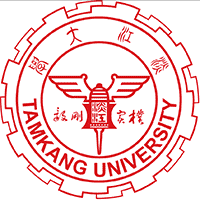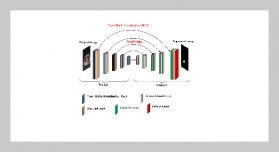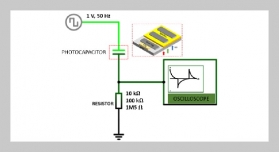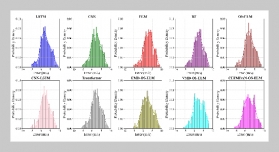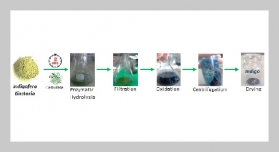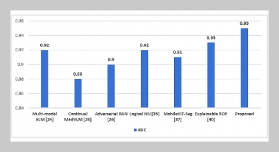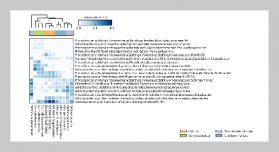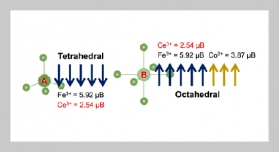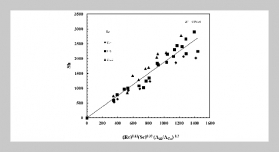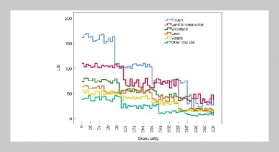- [1] M.Tubishat, N. Idris, and M. A. Abushariah, (2018) “Implicit aspect extraction in sentiment analysis: Review, taxonomy, oppportunities, and open challenges" Information Processing & Management 54(4): 545–563. DOI: 10.1016/j.ipm.2018.03.008.
- [2] M. Babaali, A. Fatemi, and M. A. Nematbakhsh, (2024) “Aspect extraction with enriching word represen tation and post-processing rules" Expert Systems with Applications 252: 124174. DOI: 10.1016/j.eswa.2024.124174.
- [3] S. Poria, E. Cambria, and A. Gelbukh, (2016) “Aspect extraction for opinion mining with a deep convolutional neural network" Knowledge-Based Systems 108: 42–49. DOI: 10.1016/j.knosys.2016.06.009.
- [4] Z. Chen, A. Mukherjee, B. Liu, M. Hsu, M. Castellanos, and R. Ghosh. “Exploiting domain knowledge in aspect extraction”. In: Proceedings of the 2013 Con ference on Empirical Methods in Natural Language Pro cessing. 2013, 1655–1667. DOI: 10.18653/v1/d13-1172.
- [5] Y. Zhao, H. Li, S. Yin, and Y. Sun, (2018) “A New Chinese Word Segmentation Method Based on Maximum Matching." J. Inf. Hiding Multim. Signal Process. 9(6): 1528–1535.
- [6] J. Z. Maitama, N. Idris, A. Abdi, L. Shuib, and R. Fauzi, (2020) “A systematic review on implicit and ex plicit aspect extraction in sentiment analysis" IEEE Ac cess 8: 194166–194191. DOI: 10.1109/ACCESS.2020. 3031217.
- [7] T. Wang, Y. Cai, H.-f. Leung, R. Y. Lau, Q. Li, and H. Min, (2014) “Product aspect extraction supervised with online domain knowledge" Knowledge-Based Systems 71: 86–100. DOI: 10.1016/j.knosys.2014.05.018.
- [8] Z. Jin, M. Tao, X. Wu, and H. Zhang, (2024) “Span based dependency-enhanced graph convolutional network for aspect sentiment triplet extraction" Neurocomputing 564: 126966. DOI: 10.1016/j.neucom.2023.126966.
- [9] M. M. A. Busst, K. S. M. Anbananthen, S. Kannan, J. Krishnan, and S. Subbiah, (2024) “Ensemble BiL STM: A Novel Approach for Aspect Extraction From Online Text" IEEE Access 12: 3528–3539. DOI: 10.1109/ ACCESS.2023.3349203.
- [10] Y. Liu, J. Shi, F. Huang, J. Hou, and C. Zhang, (2024) “Unveiling consumer preferences in automotive reviews through aspect-based opinion generation" Journal of Retailing and Consumer Services 77: 103605. DOI: 10.1016/j.jretconser.2023.103605.
- [11] W. Zou, W. Zhang, W. Wu, and Z. Tian, (2024) “A multi-task shared cascade learning for aspect sentiment triplet extraction using bert-mrc" Cognitive Computation 16(4): 1554–1571. DOI: 10.1007/s12559-024 10247-7.
- [12] Y. Shi, L. Li, H. Li, A. Li, and Y. Lin, (2024) “Aspect level sentiment analysis of customer reviews based on neural multi-task learning" Journal of Theory and Practice of Engineering Science 4(04): 1–8. DOI: 10.53469/ jtpes.2024.04(04).01.
- [13] J. Yu, H. Li, S.-L. Yin, and S. Karim, (2020) “Dynamic gesture recognition based on deep learning in human-to computer interfaces" Journal of Applied Science and Engineering 23(1): 31–38. DOI: 10.6180/jase.202003_ 23(1).0004.
- [14] H. Wei, A. Zhou, Y. Zhang, F. Chen, W. Qu, and M. Lu, (2022) “Biomedical event trigger extraction based on multi-layer residual BiLSTM and contextualized word representations" International Journal of Machine Learning and Cybernetics: 1–13. DOI: 10.1007/s13042-021-01315-7.
- [15] M. Rhanoui, M. Mikram, S. Yousfi, and S. Barzali, (2019) “A CNN-BiLSTM model for document-level sentiment analysis" Machine Learning and Knowledge Extraction 1(3): 832–847. DOI: 10.3390/make1030048.
- [16] A. Jisi, S. Yin, et al., (2021) “A new feature fusion network for student behavior recognition in education" Jour nal of Applied Science and Engineering 24(2): 133 140. DOI: 10.6180/jase.202104_24(2).0002.
- [17] R. Pecoraro, V. Basile, and V. Bono, (2022) “Local multi-head channel self-attention for facial expression recognition" Information 13(9): 419. DOI: 10.3390/info13090419.
- [18] S. Yin, H. Li, A. A. Laghari, T. R. Gadekallu, G. A. Sampedro, and A. Almadhor, (2024) “An Anomaly Detection Model Based on Deep Auto-Encoder and Capsule Graph Convolution via Sparrow Search Algorithm in 6G Internet of Everything" IEEE Internet of Things Journal 11(18): 29402–29411. DOI: 10.1109/JIOT.2024.3353337.
- [19] S. Yin, H. Li, A. A. Laghari, L. Teng, T. R. Gadekallu, and A. Almadhor, (2024) “FLSN-MVO: Edge Computing and Privacy Protection Based on Federated Learning Siamese Network With Multi-Verse Optimization Algorithm for Industry 5.0" IEEE Open Journal of the Communications Society: DOI: 10.1109/OJCOMS.2024.3520562.
- [20] X. Li, L. Bing, P. Li, and W. Lam. “A unified model for opinion target extraction and target sentiment prediction”. In: Proceedings of the AAAI conference on artificial intelligence. 33. 01. 2019, 6714–6721. DOI: 10. 1609/aaai.v33i01.33016714.
- [21] S. Mensah, K. Sun, and N. Aletras, (2021) “An empirical study on leveraging position embeddings for target-oriented opinion words extraction" arXiv preprint arXiv:2109.01238: DOI: 10.48550/arXiv.2109.01238.
- [22] K. M. Karao˘glan and O. Fındık, (2022) “Extended rule-based opinion target extraction with a novel text preprocessing method and ensemble learning" Applied Soft Computing 118: 108524. DOI: 10.1016/j.asoc.2022.108524.
- [23] Q.Zhao,F. Yang, D. An, and J. Lian, (2024) “Modeling structured dependency tree with graph convolutional networks for aspect-level sentiment classification" Sensors 24(2): 418. DOI: 10.3390/s24020418.
- [24] L. Xiao, X. Wu, J. Xu, W. Li, C. Jin, and L. He, (2024) “Atlantis: Aesthetic-oriented multiple granularities fusion network for joint multimodal aspect-based sentiment analysis" Information Fusion 106: 102304. DOI: 10.1016/j.inffus.2024.102304.
- [25] L. Yang, J. Li, E. Ci, L. Zhang, Z. Li, and P. Wang, (2025) “Label Drop for Multi-Aspect Relation Modeling in Universal Information Extraction" arXiv preprint arXiv:2502.12614: DOI: 10.48550/arXiv.2502.12614.
- [26] J. Ouyang, C. Xuan, B. Wang, and Z. Yang, (2024) “Aspect-based sentiment classification with aspect-specific hypergraph attention networks" Expert Systems with Applications 248: 123412. DOI: 10.1016/j.eswa.2024.123412.
- [27] L. Wu, Y. Luo, B. Zhu, G. Liu, R. Wang, and Q. Yu. “Graph neural network framework for sentiment analysis using syntactic feature”. In: 2024 5th Interna tional Conference on Big Data & Artificial Intelligence & Software Engineering (ICBASE). IEEE. 2024, 531–535. DOI: 10.1109/ICBASE63199.2024.10762511.
- [28] P. Zhu, B. Wang, K. Tang, H. Zhang, X. Cui, and Z. Wang, (2024) “A knowledge-guided graph attention network for emotion-cause pair extraction" Knowledge Based Systems 286: 111342. DOI: 10.1016/j.knosys.2023.111342.
- [29] V.Ganganwar and R.Rajalakshmi, (2024) “Employing synthetic data for addressing the class imbalance in aspect based sentiment classification" Journal of Information and Telecommunication 8(2): 167–188. DOI: 10.1080/24751839.2023.2270824.
